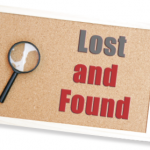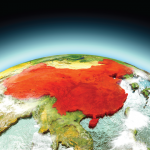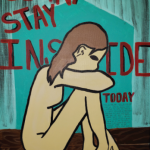Genesis Redux
1910 was also a time of plague.
Wu Lien-Teh was born in Penang, Malaysia, on March 10, 1879. At the age of 15, he moved to the United Kingdom and became the first ethnic Chinese to study medicine at the University of Cambridge.
He moved back to Malaysia after he completed his studies, but in 1910, the Chinese Imperial Court asked him to lead efforts to stop the spread of the pneumonic plague.
The Chinese were desperate. The plague spread quickly and killed all those who were infected within 48 hours of symptom onset. No one understood how it was transmitted; all they knew was that it had already killed 60,000 people in Manchuria.10
Wu Lien-Teh stopped the epidemic in months.
When he reached China, he realized he needed to understand how the plague was spread in order to figure out how to stop it. Through autopsies of the victims, he realized the pneumonic plague was not transmitted by rats, as had been widely believed at the time. It was transmitted through the air.11
This led him to implement changes that now seem anodyne: Travel outside the local region was restricted. Bodies were cremated rather than interred. Buildings were disinfected. He also developed a mask.12
Unlike masks already in use in the United Kingdom, which he had seen during his training, his mask used multiple layers of cotton and gauze. The mask was also designed to fit securely over the nose and mouth. This design allowed his mask to filter out almost all pathogens, which made it particularly valuable for healthcare.
Sound familiar?
At the time, his mask was ridiculed by his peers. No one believed his theory of airborne transmission. His poor command of Mandarin made it difficult for him to talk his colleagues into adopting his innovation. His successor in his post, Gérald Mesny, refused to wear the mask: “What can we expect from a Chinaman?” he asked, and continued to care for plague patients without wearing a mask.13
Wu’s mask gradually gained in popularity. It had the benefit of being both cheap and effective. Gradually, even people not directly involved in the care of patients started sporting masks. Because the masks were so easily seen, their use became a form of virtue signaling, a way for the general populace to show they were doing their part.
Christos Lynteris, a senior lecturer at the Department of Social Anthropology at the University of St. Andrews, Scotland, who is an expert in medical mask history, called it a triumph of marketing: “The mask was a very novel thing … it had an effect of strangeness, which the press loved, but you imagine a black-and-white photograph with a white mask—it reads well.”14
By the time of the Spanish flu outbreak of 1918, Wu’s mask was widely accepted and was manufactured by multiple companies to help combat the pandemic. Wu’s mask is seen as the direct ancestor of the N95 mask, particularly in China, where he is credited with modernizing China’s medical services.


